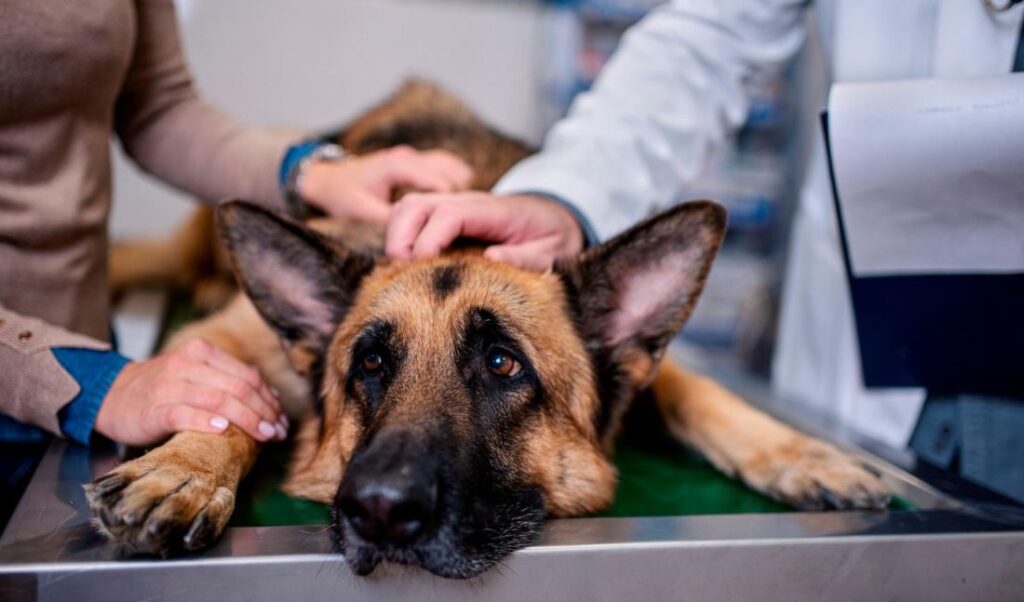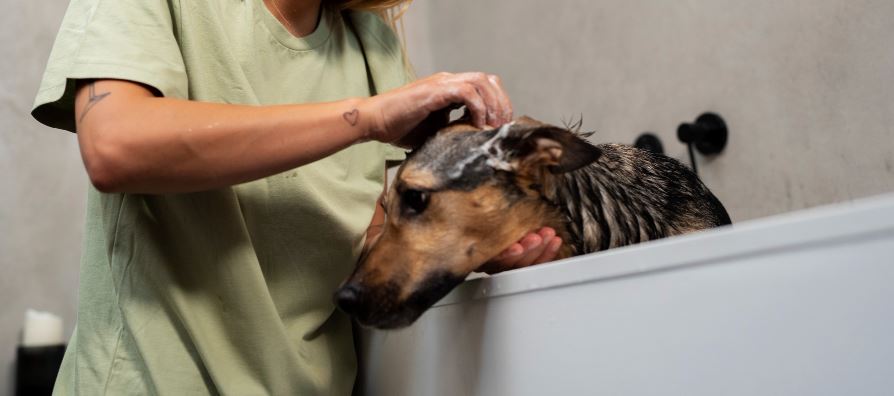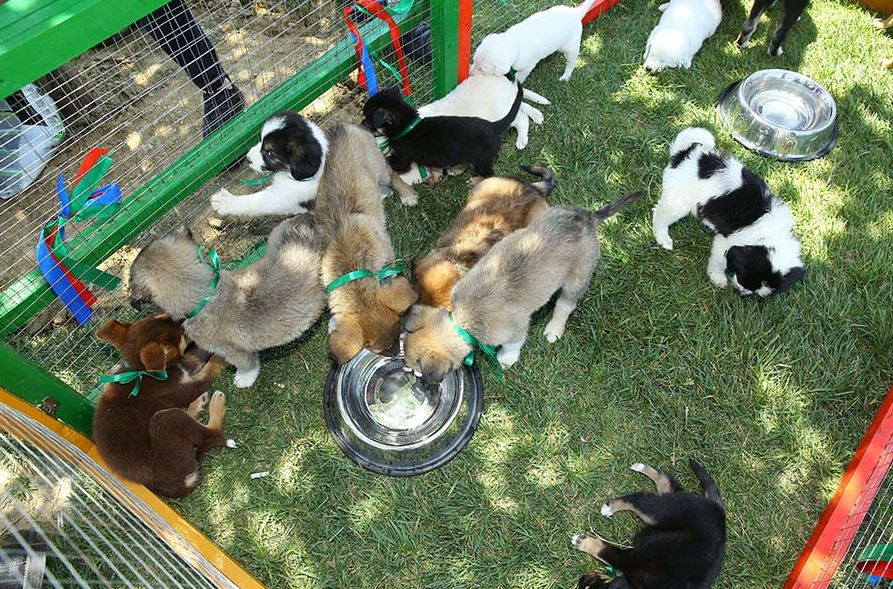As a loving dog owner, the health and happiness of your furry friend is undoubtedly a top priority. While we often focus on proper nutrition, regular exercise, and plenty of cuddles, wellness check-ups are another critical aspect of canine care that shouldn’t be overlooked. Just like humans, dogs require regular medical assessments to ensure they’re healthy. These check-ups are pivotal in maintaining your dog’s well-being, beyond the immediate treatment of illnesses or injuries.
Imagine this scenario: during a routine wellness visit, your veterinarian detects a minor issue before it becomes a major problem. This early detection not only spares your dog from potential discomfort or pain but also saves you from the emotional and financial stress of treating a more serious condition. This is just one of many instances where regular veterinary visits can significantly impact your pet’s life.
In this blog post, we’ll dive into dog wellness check-ups. From understanding what these visits entail to exploring their myriad benefits, we aim to provide you with all the information you need to make informed decisions about your dog’s health. Whether you’re a new pet parent or a seasoned dog owner, this guide will highlight why these check-ups are important for your four-legged companion’s long-term well-being.
Understanding Wellness Check-Ups
A wellness check-up, often misunderstood or underestimated by many pet owners, is a cornerstone of preventive veterinary care. Unlike visits prompted by sickness or injury, wellness check-ups are proactive appointments that focus on maintaining your dog’s overall health. These check-ups serve as a regular physical examination where veterinarians assess the dog’s general condition, looking for any signs that might indicate health issues. They include thoroughly evaluating the dog’s body condition, coat, eyes, ears, and oral health. The vet also listens to the dog’s heart and lungs, checks the abdomen, and evaluates joint health.
The key difference between wellness check-ups and sickness visits lies in their purpose. While sickness visits are reactive, addressing specific health concerns or symptoms that have already appeared, wellness check-ups are preventive. They aim to catch potential health problems before they develop into serious conditions. This proactive approach keeps your dog healthier and can lead to more manageable veterinary bills over your dog’s lifetime.
Early Detection of Health Issues
The importance of early detection in managing and treating dog diseases cannot be overstated. When caught early, many canine diseases and conditions can be treated more effectively, which can significantly improve the quality and length of your dog’s life. For instance, early detection of conditions like diabetes, heart disease, or thyroid issues can make a substantial difference in treatment options and outcomes.
Wellness check-ups are critical for early identification of common canine health problems. These include arthritis, particularly prevalent in older dogs; heartworms, which are simpler to prevent than cure; and obesity, an increasing issue that can escalate into serious conditions like diabetes and joint complications. These check-ups are also key for early detection of potential cancers, organ dysfunctions, and various systemic ailments.
Vaccinations and Preventive Care
Vaccinations play a vital role in your dog’s wellness check-ups. They are essential for preventing various infectious diseases that can be harmful or even fatal. All dogs should receive core vaccinations to safeguard against rabies, distemper, parvovirus, and hepatitis. Additionally, depending on your dog’s lifestyle and specific risk factors, non-core vaccinations may be advised. These can offer protection against diseases such as Bordetella (commonly known as kennel cough), Lyme disease, and leptospirosis.
The timing and frequency of vaccinations are crucial. Puppies typically start receiving a series of vaccinations when they are around six to eight weeks old, continuing until they are about 16 weeks old. After this initial series, dogs usually need booster shots annually or every three years, depending on the vaccine type and local laws regarding rabies vaccinations.
But vaccinations are just one part of preventive care. During wellness visits, your vet will also discuss and provide flea, tick, and heartworm prevention treatments. These parasites are not only a source of discomfort for your dog but can also lead to serious health issues. For example, transmitted by mosquito bites, heartworms can cause heart failure and damage other organs. Regular preventive treatments are the easiest and most effective way to keep these pests away from your beloved pet.
Dental Health
The significance of dental health in dogs is often underestimated, yet it remains a vital component of their overall well-being. Neglected dental health can result in issues like halitosis, discomfort while eating, and even tooth loss.
During wellness check-ups, your veterinarian will examine your dog’s teeth and gums, looking for signs of dental disease, such as tartar buildup, gum inflammation, or loose teeth. By ensuring regular dental examinations and cleanings, you can either prevent these dental problems or address them promptly when they are still manageable. Early intervention in dental care is often simpler and less invasive, highlighting the importance of consistent dental check-ups for your dog’s health.
In addition to professional cleanings, your vet will likely recommend a dental care routine at home. This routine can include brushing your dog’s teeth, providing dental chews, and using dental health diets or water additives. These practices help maintain dental hygiene between professional cleanings and check-ups.
Nutrition and Weight Management
Proper nutrition is fundamental to a dog’s health and longevity. The right diet can help prevent a host of health issues, including obesity, diabetes, and heart disease. However, with so many dog food options available, choosing the right one can be overwhelming. This is where your veterinarian becomes an invaluable resource. During wellness check-ups, they can assess your dog’s nutritional needs based on age, breed, activity level, and health concerns.
A vet can help create a balanced diet plan tailored to your dog’s needs. This may involve recommendations on commercial dog foods, guidance on portion sizes, and advice on supplements if necessary. A vet can suggest prescription diets that cater to these needs for dogs with specific health issues like allergies, joint problems, or digestive disorders.
Weight management is another critical aspect of your dog’s health. Obesity in dogs can lead to various health problems, including arthritis, diabetes, and heart disease. Regular wellness check-ups allow the vet to monitor your dog’s weight and guide diet adjustments and exercise regimens to manage weight effectively.
Behavioural Assessments
Behavioural assessments are a significant component of wellness check-ups. Your veterinarian can observe your dog’s behaviour during the exam and discuss any changes you’ve noticed at home. Changes in behaviour can be indicators of underlying health issues. For instance, a dog that suddenly becomes aggressive or starts urinating indoors may be experiencing pain or stress.
Early identification and intervention in behavioural issues are crucial. Some behavioural changes require medical treatment, while others may benefit from behavioural therapy or modifications in the home environment. Your vet can refer you to a behaviourist or offer advice on managing certain behaviours.
Senior Dogs: Special Considerations
Senior dogs have specific needs that require special attention during wellness check-ups. As dogs age, they are more prone to developing conditions like arthritis, vision and hearing loss, cognitive dysfunction, and organ failure. Regular check-ups allow for early detection and management of these age-related issues.
Vets can offer advice on modifying your home to make it more comfortable for an aging dog, such as using ramps for mobility-impaired dogs or special diets for those with kidney issues. They can also guide you on pain management, supplements, and lifestyle changes that can improve the quality of life for your senior dog.
Building a Relationship with Your Vet
One of the most significant benefits of regular wellness check-ups is building a trusting relationship with your veterinarian. This relationship is vital for providing the best care for your dog. A vet who knows your dog’s history, behaviour, and previous health issues can make more accurate diagnoses and recommendations.
Consistent wellness check-ups record your dog’s health over time, which can be invaluable in detecting subtle changes that might indicate health problems. Moreover, having a veterinarian you trust can provide peace of mind, knowing that your dog’s health is in good hands.
Throughout this blog post, we’ve explored the multifaceted importance of wellness check-ups for your dog. To recap, these check-ups are essential for:
- Proactive Health Monitoring: Regular wellness visits allow for the early detection and treatment of potential health issues before they become more serious problems.
- Vaccinations and Preventive Care: Keeping your dog up to date with vaccinations and preventive treatments for parasites is crucial for their long-term health.
- Dental Health: Regular dental check-ups are vital for preventing gum disease and other oral health issues.
- Nutrition and Weight Management: Personalized advice from your vet on your dog’s diet and weight management helps prevent obesity and related health issues.
- Behavioural Assessments: Understanding and addressing behavioural changes can be key indicators of underlying health issues.
- Senior Dog Care: Older dogs have special needs, and regular check-ups help manage age-related health issues effectively.
- Building a Relationship with Your Vet: Consistent wellness check-ups foster a trusting relationship with your veterinarian, which is invaluable for your dog’s ongoing health care.
The importance of wellness check-ups extends far beyond these individual aspects. They are a cornerstone of responsible pet ownership, ensuring that your dog lives long and enjoys the best quality of life possible. These visits are opportunities to catch health issues early, seek professional advice on care and nutrition, and ensure your dog is happy and healthy at every stage of life.
In essence, wellness check-ups invest in your dog’s health and happiness. By prioritizing these visits, you’re giving your furry friend the best chance to lead a full, vibrant life. Remember, a healthy dog is happy, and regular wellness check-ups are your roadmap to achieving both.
More Details











